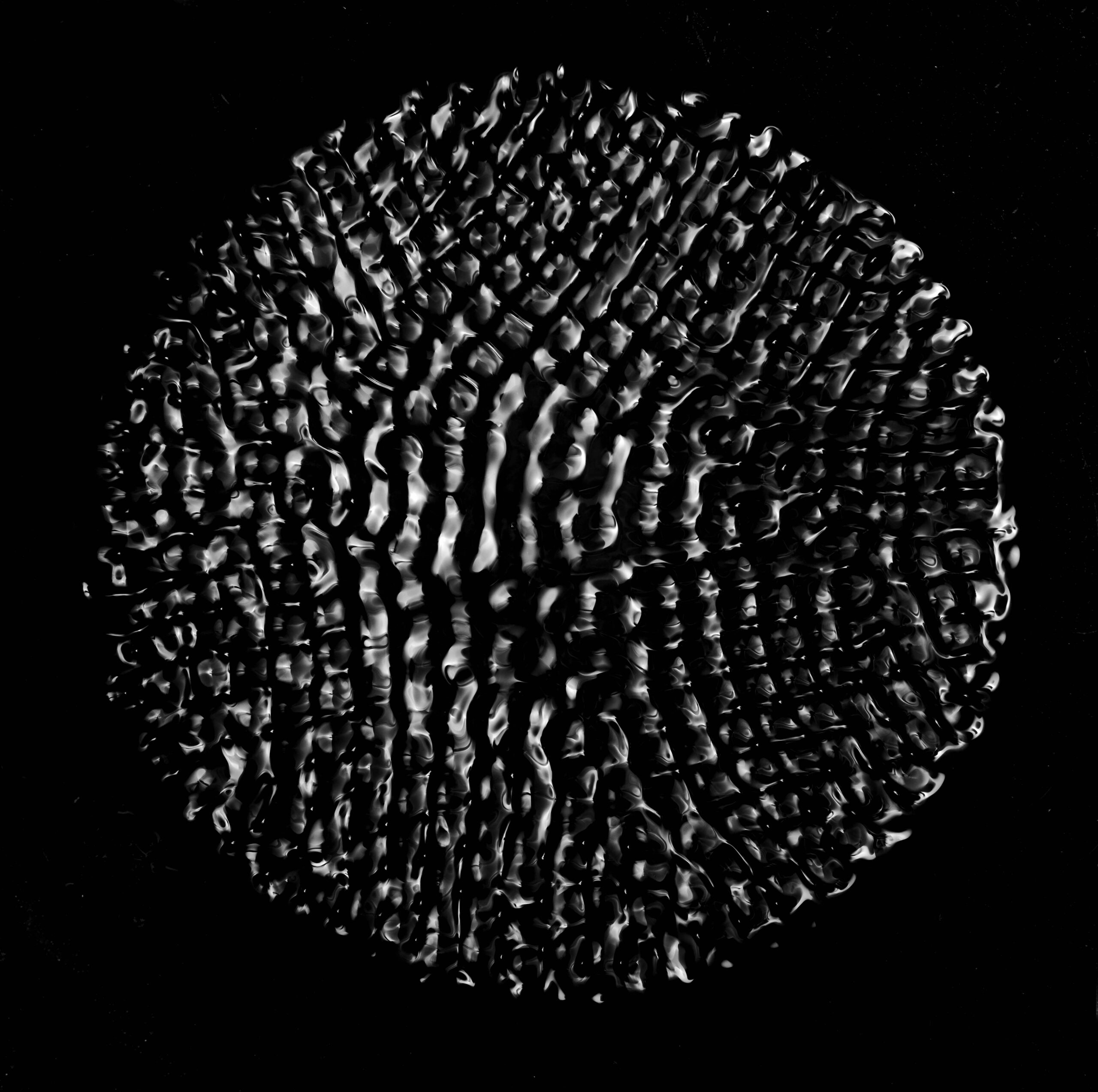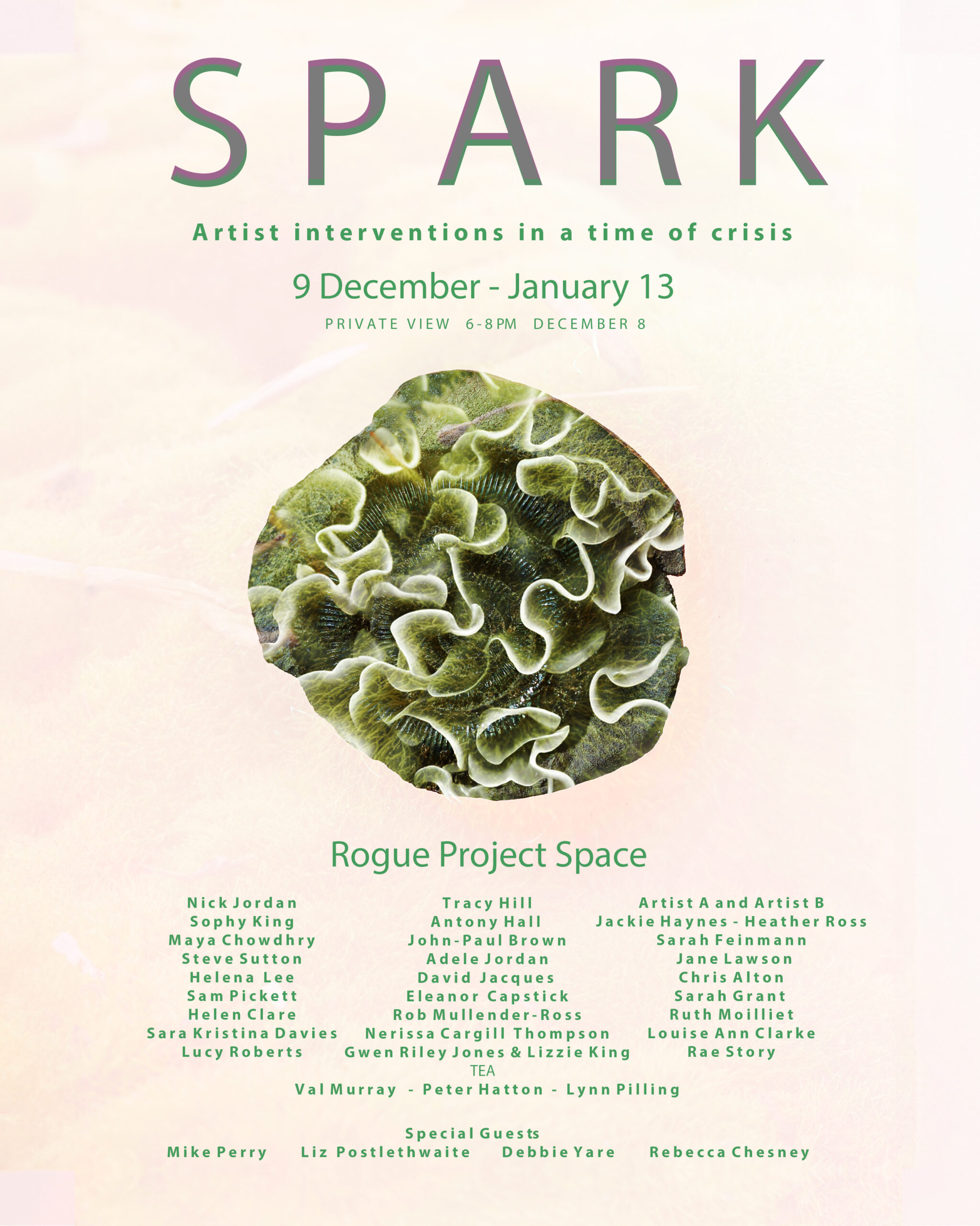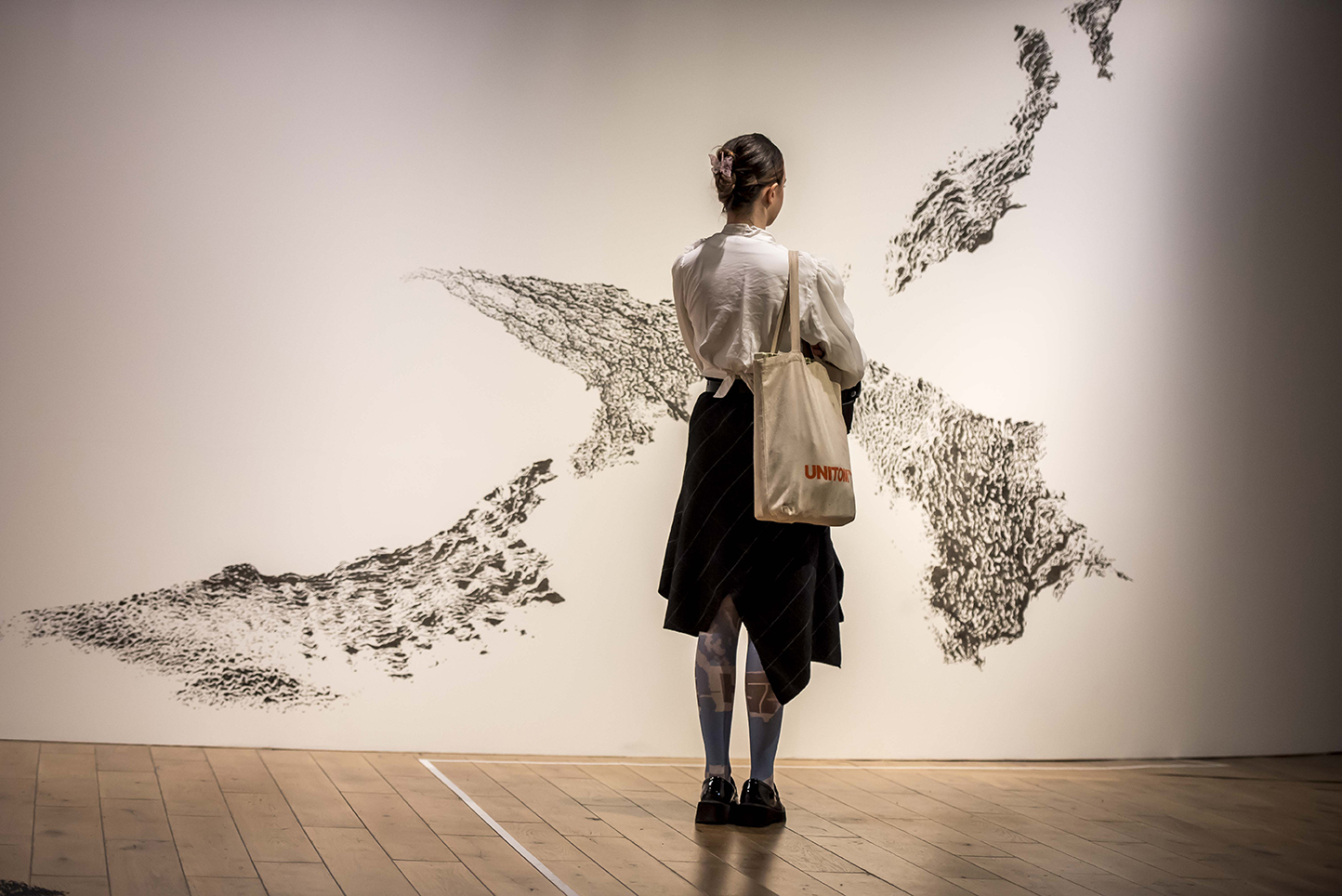‘Those granted the gift of seeing more deeply can see beyond form and concentrate on the wondrous aspect hiding behind every form, which is called life.’
Hilma af Klint (1862-1944)
The densely rich, velvety surface of Tracy Hill’s print Sonorous (2023) is one that invites touch. This impulse, counter to how we are expected to interact with an artwork, is one that Hill encourages: with Sonorous, our touch holds the potential to unlock an invisible layer of sound, our interaction triggering an exchange of energy between ourselves and the inked surface. Printmaking has long been central to Hill’s practice but as a medium, it is one that she has consistently stretched the boundaries of, often combining traditional printmaking techniques with experimental and novel processes. Resisting the urge to contain and frame, print is pushed into new possibilities, combining with drawing, audio and installation to create works that are not only visual, but sensory and experiential.
Visitors to Hill’s 2022 exhibition Ephemeral Bodies, at AirSpace gallery in Stoke-on-Trent, encountered strange and unfamiliar sounds as they entered the gallery. These recordings, of rumbling, echoing, mysterious noises, were made with sound artist Phill Phelps during her residency (titled Porosity) at AirSpace. They capture the invisible forces present within the gallery but normally outside the range of human perception – from naturally produced magnetic fields and vibrations to Wi-Fi signals and electrical currents. The recordings were carried forward into her residency at the Centre for Print Research (CFPR) at the University of the West of England (UWE) in 2023 and developed further. Working with researcher, Frank Menger, Hill photographed the captured sounds as they vibrated through drawing ink, creating richly complex, cymatic patterns. The resulting photographs became the etched black surface of Sonorous – a visible resonance of the invisible forces captured at AirSpace.
Hill often seeks out collaborative relationships to deepen her understanding not only of her relationship to the landscape, but the potential of new mediums and processes. From working with experts in geology and geophysics, water dowsers and her most recent collaboration with staff at CFPR, Hill’s understanding of our place within the world is enriched through walking, talking and the asking of questions. During her residency at AirSpace, Hill worked with dowser Deborah Bell, to uncover a hidden stream beneath the gallery floor. She later invited visitors to envisage this invisible flow of energy through dowsing, and through her site-specific work Ephemeral Bodies, drawn using salt on the gallery floor, which captured the rhythm and flow of the subterranean spring. During her residency at CFPR, and the making of Sonorous, Hill has worked with Dr Nazmul Karim, an expert on the potential real-world applications of the innovative, super conductive material graphene. Hill’s aim for the residency was to challenge perceptions of the printed image and to create a surface, incorporating graphene, that could respond to presence and touch, holding the possibility of sonic experience. Beneath the etched cymatic patterns of Sonorous, sits another layer, almost imperceptible at first glance, made from graphene. Developed from Hill’s drawings of graphene, observed at a microscopic level at UCLan, this web like screen-printed layer enables energy to flow through the work when connected to a power source. As we touch and move our hand above Sonorous, an exchange of energy is triggered between us and the graphene layer of the print, enabling us to hear Hill’s AirSpace recordings of mapped invisible forces.
Hill’s collaborative and speculative practice challenges us to think more broadly about landscape, and howour bodies receive and interact with the imperceptible vibrations and energies that surround us within our environment. Her works have much in common with contemporary artists such as Christina Kubisch and Teri Rueb, whose experiential, sound-based practices sit within this intersection between the visible and invisible. When thinking of Hill’s practice, I’m also reminded of the visionary artist Hilma af Klint (1862-1944), whose life work was not only influenced by the mediumistic messages she received from higher spiritual beings, but by the scientific discoveries of the early 20th century. Af Klint’s explorations of the atom and the possibilities of the fourth dimension, visualise vividly, through paint, paper and canvas, invisible forces of energy hidden within nature. For Hill, this juncture, where art, science and philosophical speculation resides, is a rich one. Experiments with innovative technologies such as graphene create exciting possibilities within her practice and the potential of creating new ways of seeing beyond the visible.
Jacqui McIntosh, May 2023
From the writings of Hilma af Klint, quoted in the 2019 documentary ‘Beyond the Invisible’, Directed by Halina Dyrschka, 2019
Dr Nazmul Karim is an Associate Professor for Novel Print Processes and Materials (Graphene) at the Centre for Fine Print Research (CFPR), UWE Bristol (UK), whose research focusses around real world applications of the conductive manmade material Graphene.
Graphene was first discovered and isolated in the lab at the University of Manchester in 2004 by Andre Geim and Konstantin Novoselov. This incredible medium is the lightest most conductive manmade material on earth and is derived from a single, one atom thick layer of the commonly found mineral graphite.





Leave A Comment